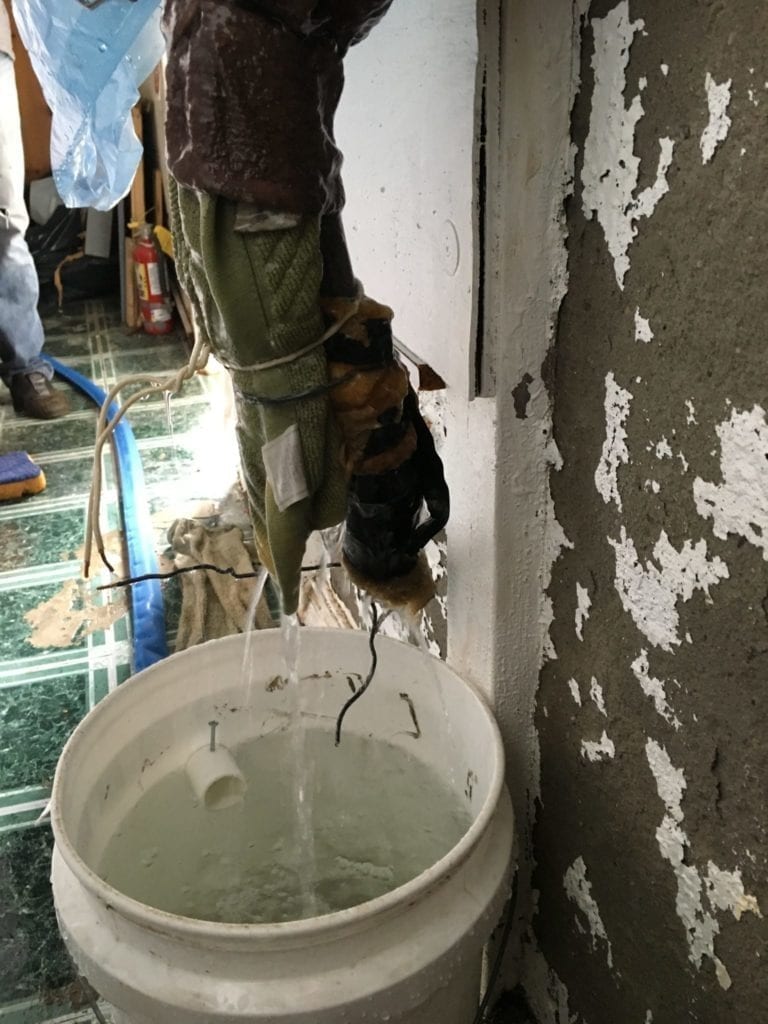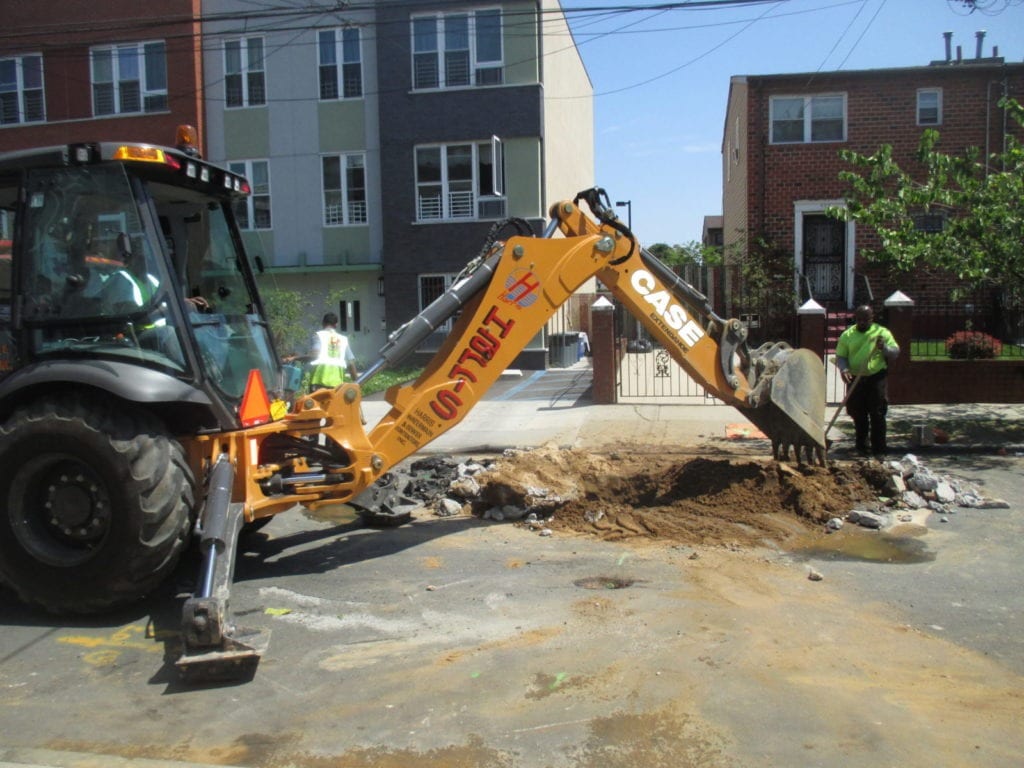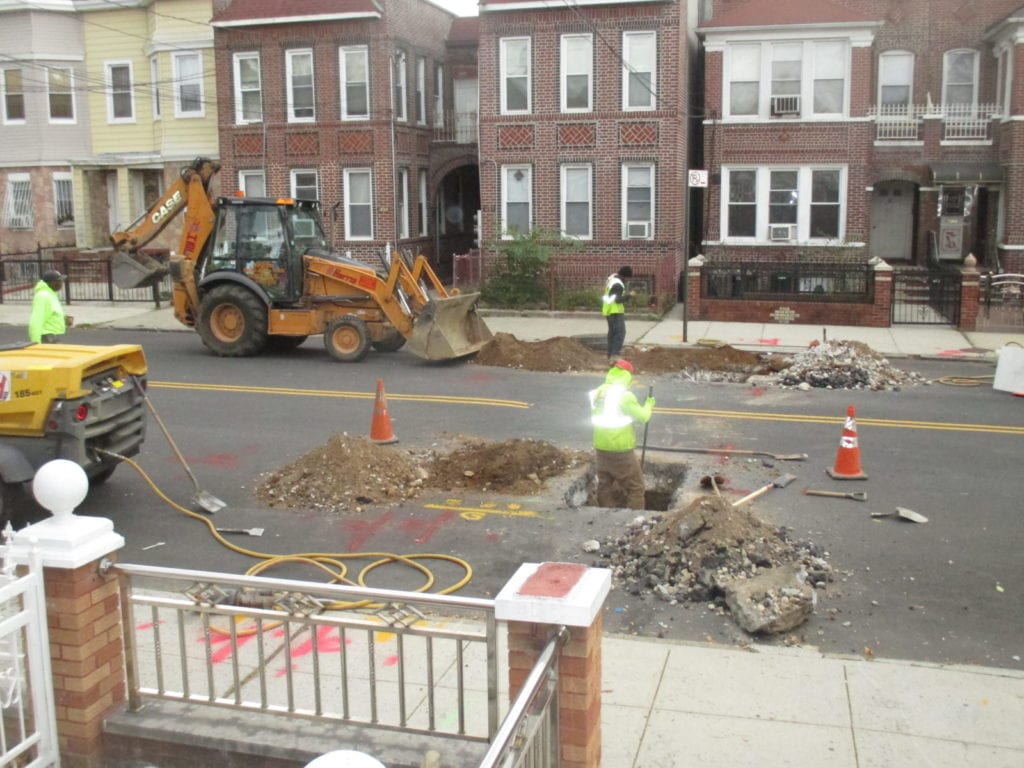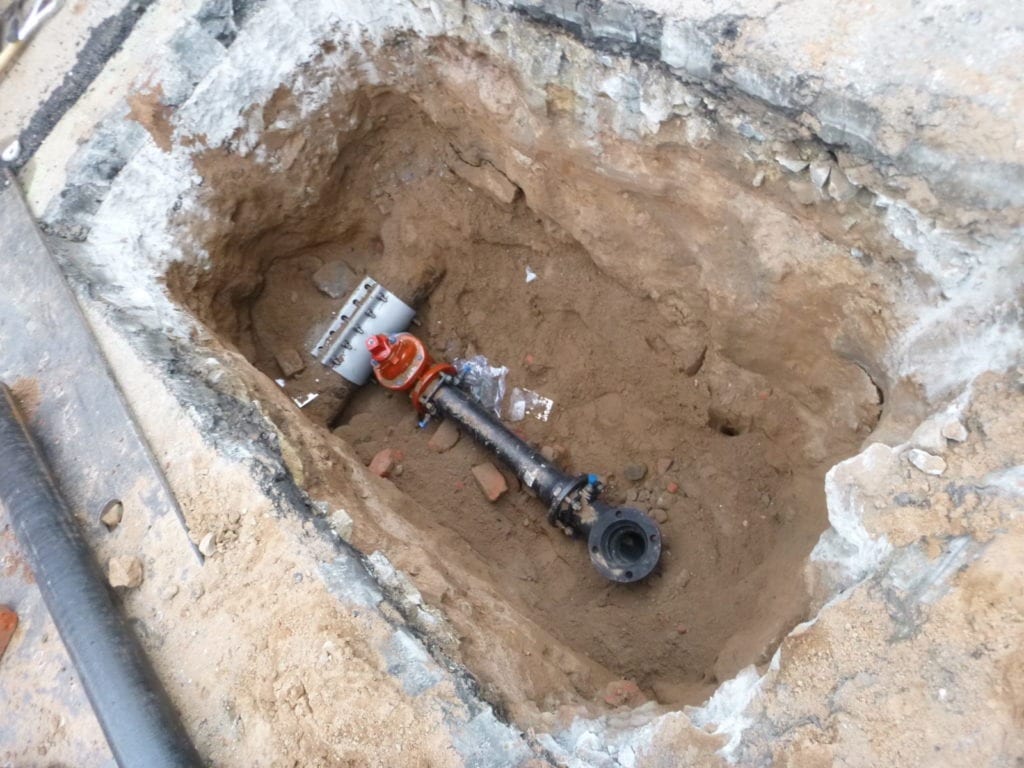Most homeowners would like to avoid digging in front of the house to repair a broken water main. The first question we usually receive is “how can you repair the leaking water main without breaking my concrete”. We do understand that digging in front of your house is a nuisance and potentially an inconvenience while the repair is being completed.
Can you avoid digging?
This is dependent on where the water main is leaking. If the existing pipe is near the foundation wall it is possible to avoid digging. This is all dependent on the existing material makeup of the pipe, if a repair is compliant under DEP code and if you are 100% sure where the pipe is actually broken.

Water main leaking near foundation wall |
In this case the licensed plumber may be able to repair the pipe by opening a small hole in the foundation.
What is the standard procedure?
If the location of your water main leak is unknown, and you are required to dig, the excavating will most likely start in the roadway. The goal is to locate the connection to the city main and turn off the leaking water main for better work conditions.

|
While the water main connection is being closed the crew is working on the other areas that may require digging. This is all dependent on how many feet of new piping has to be installed, as well as the location of the city main.
If the city water main is located on the same side of the street as the house the water main installation will require fewer holes than if the city water main is located on the alternate side of the street.

Installing water main from opposite side of the street |
How deep do you have to dig?
This is dependent on the depth of the city water main as well as the point of entry in the house. On average the city water main is 3′-4′ deep. The plumber is required to re-connect back to the existing connection and would require digging to the same depth as the city water main.

City main 3′ deep |
If the point of entry in the house is deeper than the connection on the city main the plumber is required to make tunnels from one hole to the next. In this case the tunnels are required to be made on an angle sloped down to the point where the pipe is to enter the home. Depending on the digging conditions, this may require additional digging as well.
How are the holes filled in upon completion?
Once the new piping is completed each hole is back filled with dirt and compacted with a tamper to make sure the grounds are secure and avoid any future issues. On a larger job the crew may use a backhoe to assist with back filling the holes to save on time.
Watch a detailed video on the water main installation process here




















